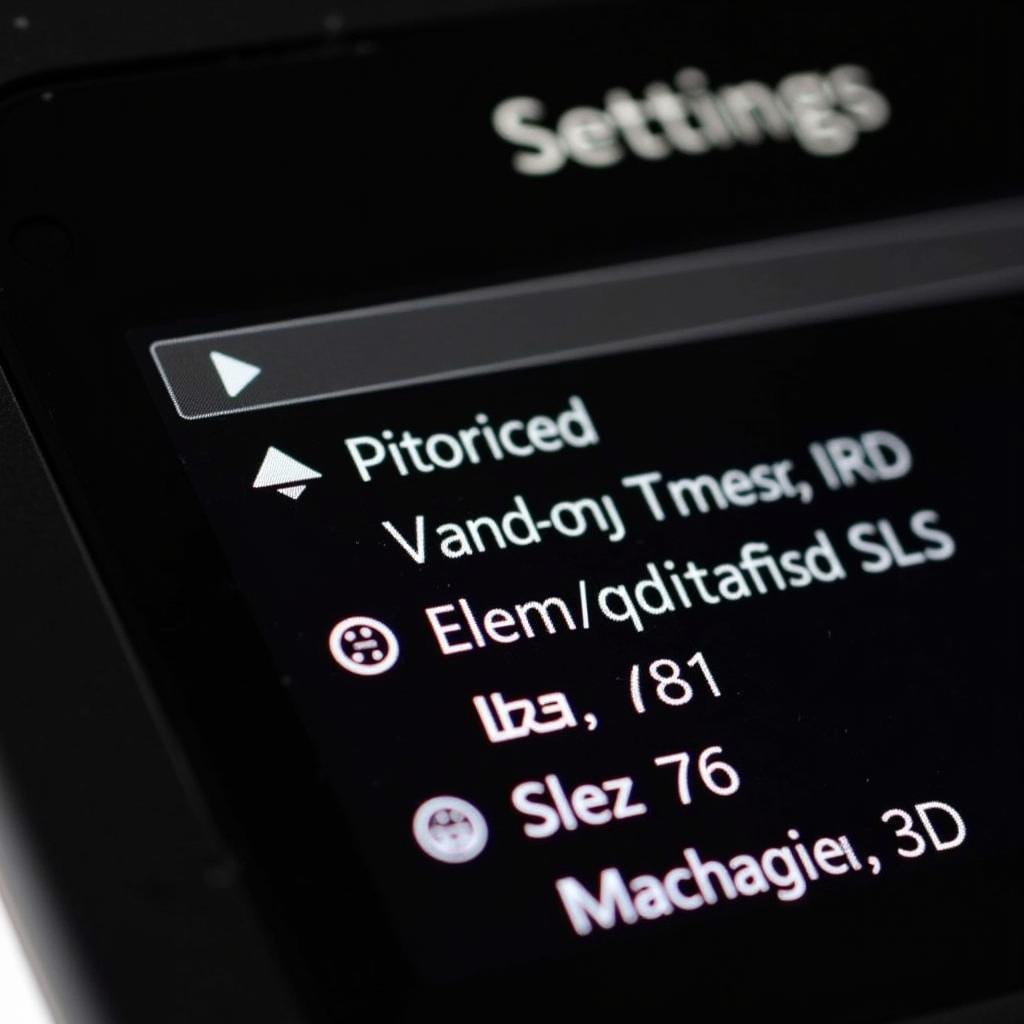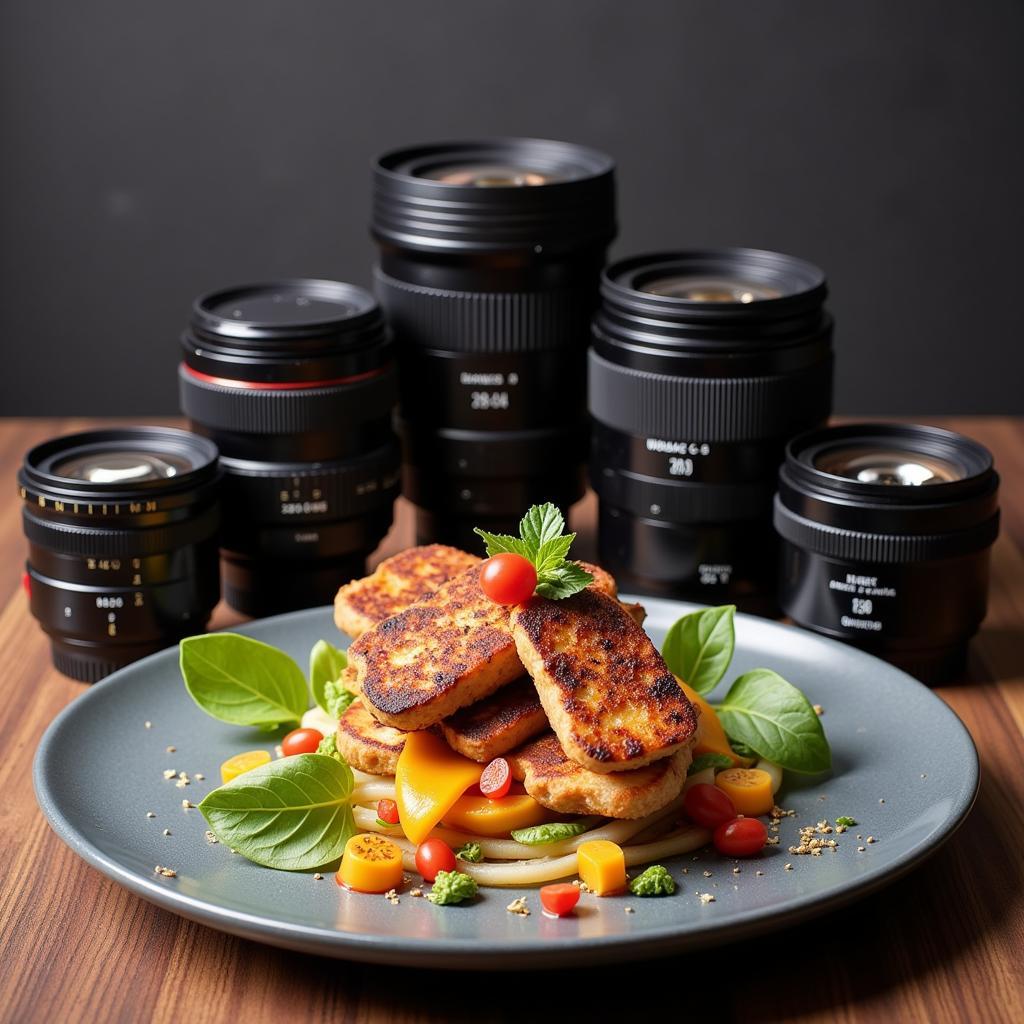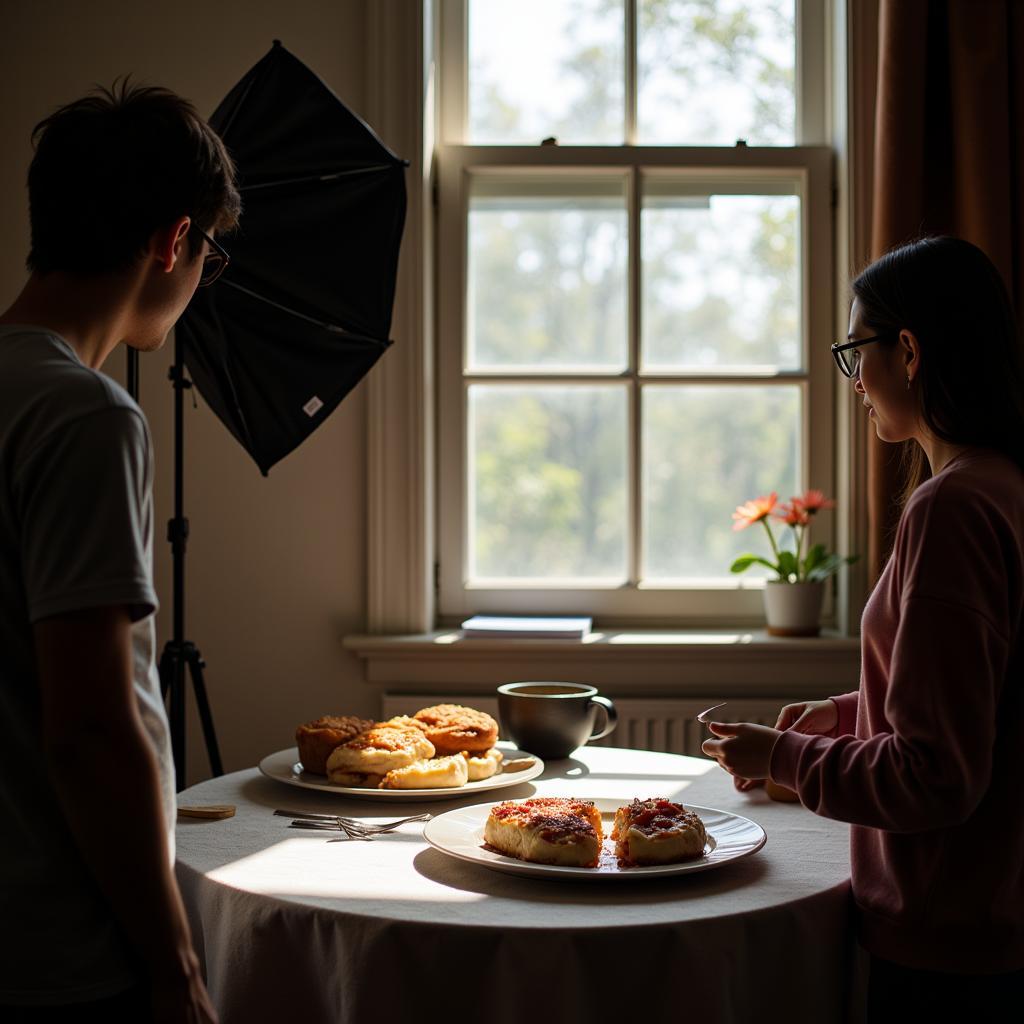A Good Camera For Food Photography can transform your culinary creations into visual masterpieces. Whether you’re a seasoned food blogger or just starting, choosing the right camera is crucial for capturing mouthwatering images that entice and inspire. This guide will explore the essential features, top recommendations, and practical tips to help you find the perfect camera to elevate your food photography game.
Key Features of a Good Camera for Food Photography
 Essential features of a good camera for food photography
Essential features of a good camera for food photography
Before diving into specific camera models, let’s discuss the key features that make a camera ideal for capturing delectable food photos. A camera with excellent image quality, manual controls, and versatile lens options will be your best friend in the food photography world. Control over aperture, ISO, and shutter speed is essential for achieving the desired depth of field, light sensitivity, and motion blur (or lack thereof). A good camera will allow you to fine-tune these settings to perfection.
Image Quality and Resolution
High resolution is vital for capturing crisp, detailed images of your culinary creations. Look for cameras with at least 20 megapixels for optimal print and online sharing quality. A larger sensor size generally translates to better image quality, especially in low-light conditions often encountered in restaurants or indoor settings.
Manual Controls and Focus
Manual controls empower you to take full creative control over your food photography. The ability to adjust aperture, shutter speed, and ISO is essential for achieving the desired look and feel. Accurate and responsive autofocus is crucial for sharp, in-focus images, especially when working with shallow depths of field.
Lens Compatibility and Versatility
A good camera for food photography should offer a range of lens options, allowing you to experiment with different perspectives and compositions. Macro lenses are excellent for capturing intricate details and close-ups, while prime lenses with wide apertures create beautiful background blur (bokeh).
 Interchangeable lens camera for food photography.
Interchangeable lens camera for food photography.
Choosing the Right Camera: Mirrorless vs. DSLR
The two dominant camera types for food photography are mirrorless and DSLR cameras. Both offer excellent image quality, but there are key differences to consider. Mirrorless cameras are generally smaller and lighter, making them more portable for on-the-go food photography. DSLRs, on the other hand, often have a wider selection of lenses and longer battery life.
Top Camera Recommendations for Food Photography
There are many great cameras on the market suitable for food photography, ranging from entry-level models to professional-grade options. Some popular choices include the Sony a7 III, Canon EOS R6, and Fujifilm X-T4. Each camera has its strengths and weaknesses, so consider your budget and specific needs when making a decision.
Lighting and Composition Tips
While a good camera is essential, proper lighting and composition are equally important for capturing stunning food photos. Natural light is often preferred for its soft, even illumination. However, using a ring flash food photography can also create beautiful results. Experiment with different angles and compositions to find what works best for your subject.
 Food photography lighting setup.
Food photography lighting setup.
Conclusion: Investing in Your Food Photography Journey
A good camera for food photography is an investment in your passion and creativity. By understanding the key features and choosing the right equipment, you can elevate your food photography to new heights. Whether you’re a budding food blogger or a professional chef, capturing mouthwatering images of your culinary creations has never been easier. Remember, the perfect camera is the one that best suits your individual needs and helps you tell your unique food story. So, invest wisely and let your creativity flourish!
FAQ
- What is the best budget camera for food photography?
- Do I need a macro lens for food photography?
- What are the best lighting techniques for food photography?
- How can I improve my food photography composition?
- What camera settings should I use for food photography?
- Is a tripod necessary for food photography?
- How can I edit my food photos for optimal results?
Common Scenarios:
- Scenario 1: A food blogger wants to upgrade their smartphone photography to a dedicated camera for higher quality images.
- Scenario 2: A restaurant owner needs a camera to capture professional-looking photos for their menu and social media.
- Scenario 3: A home cook wants to document their culinary creations with beautiful and enticing photos.
Further Reading:
Check out our articles on the best lens for food photography and food blogger gifts for more helpful information.
Need help? Contact us 24/7 at Phone: 02437655121, Email: minacones@gmail.com or visit us at 3PGH+8R9, ĐT70A, thôn Trung, Bắc Từ Liêm, Hà Nội, Việt Nam.